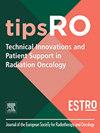Patient perspectives on participation in the Danish Breast Cancer Group Proton Trial: A qualitative research study
IF 2.8
Q1 Nursing
Technical Innovations and Patient Support in Radiation Oncology
Pub Date : 2025-09-14
DOI:10.1016/j.tipsro.2025.100344
引用次数: 0
Abstract
Background and purpose
Participation in clinical trials is essential to advancing oncological treatments, yet equitable trial access remains challenging. Diverse patient inclusion strengthens external validity and enhances the generalisability of trial outcomes. However, barriers to trial participation persist, and the factors influencing patient enrolment are not fully understood. This study investigates the patient perspective on participation in the Danish Breast Cancer Group (DBCG) Proton Trial.
Materials and methods
Patients eligible for the DBCG Proton Trial were invited to participate in interviews. Patients were selected to ensure geographical and perspective-based diversity, including randomised and non-randomised patients from eight radiotherapy clinics in Denmark. Semi-structured interviews were conducted via telephone, transcribed, and analysed using an inductive approach to identify the patient perspective on trial participation.
Results
A total of fifteen patients were interviewed. The analysis identified five themes encompassing patients’ motivators and barriers to trial participation: distance to the treatment facility, timing of trial information, decisional support, clinical equipoise and patient needs. These factors were reported by both randomised and non-randomised patients.
Interpretation
Participation in the DBCG Proton Trial was determined by both logistical and personal factors. Distance to the proton treatment facility was the most important barrier, while the potential for reduced late effects was the main motivator. The decision was difficult for most patients, often guided by one dominant concern rather than a balanced consideration of multiple factors. These findings suggest that improved trial communication, decisional support, and attention to geographical barriers are essential for promoting equitable participation in clinical trials.
丹麦乳腺癌组质子试验中患者参与的观点:一项定性研究
背景和目的参与临床试验对推进肿瘤治疗至关重要,但公平的试验准入仍然具有挑战性。多样化的患者纳入加强了外部有效性,提高了试验结果的普遍性。然而,参与试验的障碍仍然存在,影响患者入组的因素尚未完全了解。本研究调查了患者参与丹麦乳腺癌组质子试验(DBCG)的观点。材料和方法入选DBCG质子试验的患者被邀请参加访谈。选择患者以确保地理和基于视角的多样性,包括来自丹麦8个放疗诊所的随机和非随机患者。通过电话进行半结构化访谈,记录并使用归纳方法进行分析,以确定患者对试验参与的看法。结果共访谈15例患者。分析确定了五个主题,包括患者参与试验的动机和障碍:与治疗设施的距离、试验信息的时间、决策支持、临床平衡和患者需求。随机分组和非随机分组的患者均报告了这些因素。参与DBCG质子试验是由后勤和个人因素决定的。与质子治疗设施的距离是最重要的障碍,而减少后期效应的潜力是主要的激励因素。对大多数患者来说,决定是困难的,通常是由一个主要的问题引导,而不是多种因素的平衡考虑。这些发现表明,改善试验沟通、决策支持和关注地理障碍对于促进公平参与临床试验至关重要。
本文章由计算机程序翻译,如有差异,请以英文原文为准。
求助全文
约1分钟内获得全文
求助全文
来源期刊

Technical Innovations and Patient Support in Radiation Oncology
Nursing-Oncology (nursing)
CiteScore
4.10
自引率
0.00%
发文量
48
审稿时长
67 days
 求助内容:
求助内容: 应助结果提醒方式:
应助结果提醒方式:


